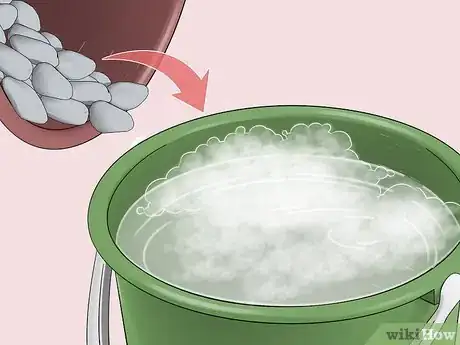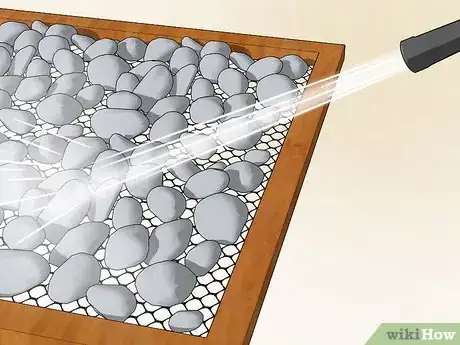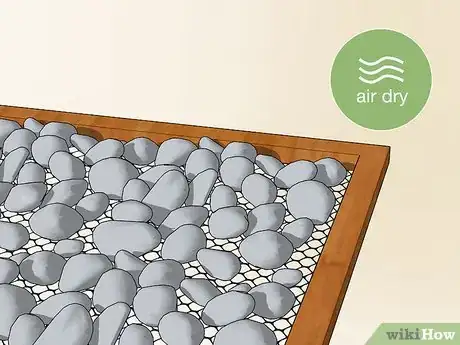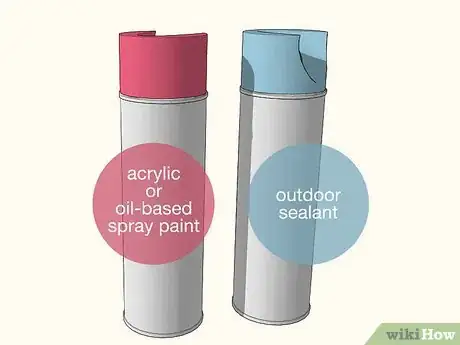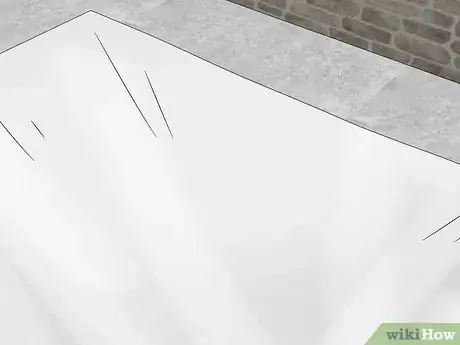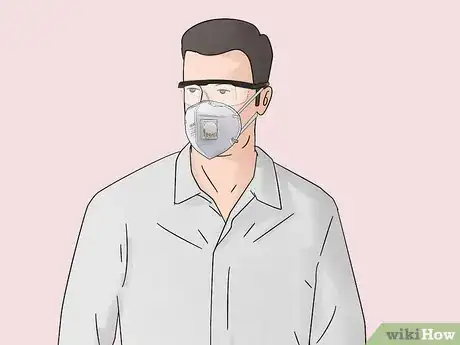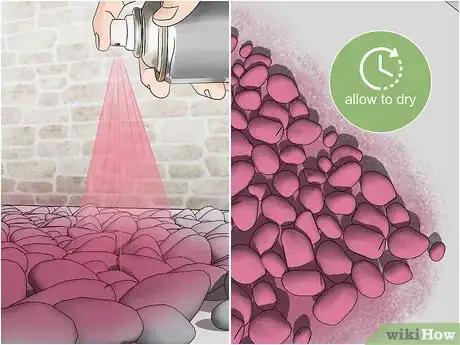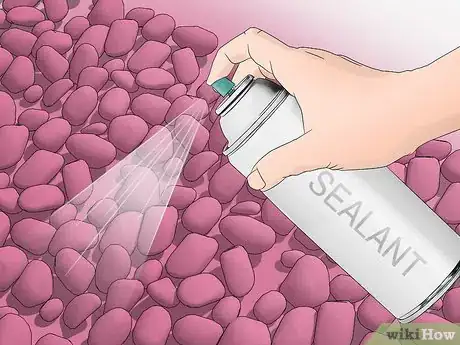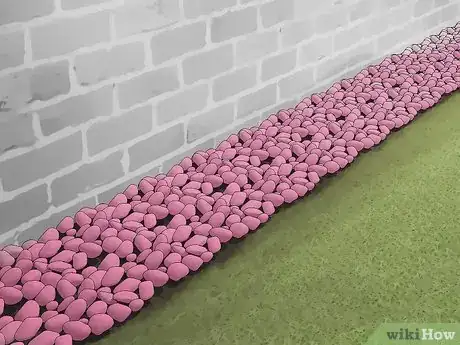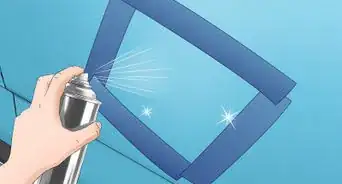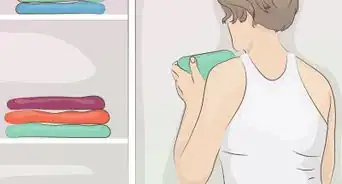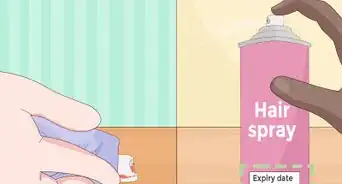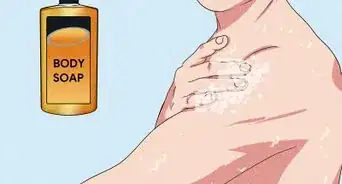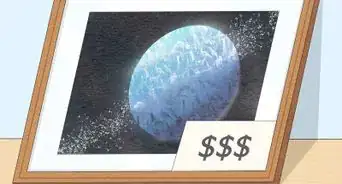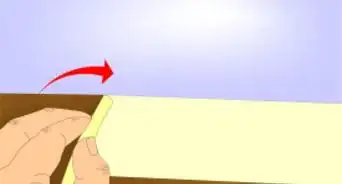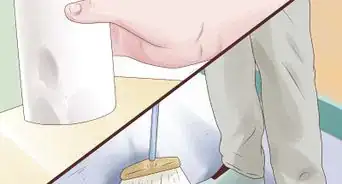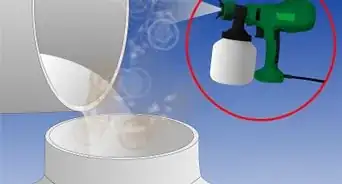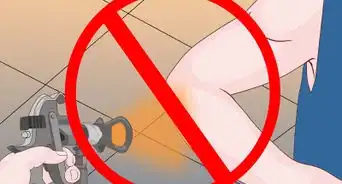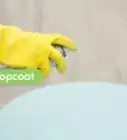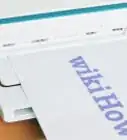This article was co-authored by wikiHow Staff. Our trained team of editors and researchers validate articles for accuracy and comprehensiveness. wikiHow's Content Management Team carefully monitors the work from our editorial staff to ensure that each article is backed by trusted research and meets our high quality standards.
This article has been viewed 28,477 times.
Learn more...
Painting gravel allows you to customize the color of the rocks for use in landscaping and for other decorative purposes. You can paint gravel any color you'd like, but earth tones and greens are often popular choices for use in landscaping. Clean the gravel before painting it to ensure that the paint will stick, and then apply your paint in multiple coats. Follow it up with a sealant to protect the paint from fading due to sun and water exposure, then use the gravel however you want!
Steps
Cleaning the Gravel Before Painting
-
1Soak the gravel in a bucket of warm, soapy water if it’s very dirty. If the gravel appears dirty, then fill a large bucket with warm, soapy water and add the gravel to it. Pour 1 teaspoon (5 mL) of dish soap into the bucket for every 1 US gal (3.8 L) of warm water in the bucket. Let the gravel soak in the soapy water for about 10 minutes before rinsing it over a screen.[1]
- Keep in mind that you can skip this if you’re gravel does not appear to be very dirty.
-
2Place the gravel on a screen and spray it with a hose. Place an old window or door screen on grass or concrete. Then, place the gravel on top of the screen and spread it out in a single layer. Spray the gravel with a hose to remove any loose dirt and debris. Move the hose back and forth over the gravel for 3-5 minutes to rinse away all of the dirt and debris.[2]
- Placing the gravel on a screen first will allow dirt to drain without washing away the gravel. However, if you don’t have a screen, you can also place the gravel on a tarp or on concrete.
Advertisement -
3Leave the gravel to air-dry or dry it with a blow dryer. If the weather is warm and you’ve left the gravel outside to dry, it will most likely take about 1-2 hours. However, if you’re drying the gravel indoors or outside on a cold day, it may take up to 8 hours to dry. You can speed the process by running a hair dryer over the gravel. Turn the hair dryer on the high-heat setting and move it back and forth across the gravel to dry it. Repeat for about 5-10 minutes or until all of the gravel is dry.[3]
Tip: You may also dry off the gravel with a towel. Press a dry towel against the gravel, shake or stir it around, and then blot it with a towel again. Keep doing this until the gravel is completely dry.
Preparing to Paint
-
1Select an acrylic or oil-based spray paint and an outdoor sealant. Earth tones are popular colors to paint gravel if you’re using it to fill in areas of your garden or for other landscaping purposes. Try a shade of brown, beige, copper, or even grey for gravel that you want to use as garden filler. However, if you want the gravel to resemble a lawn, try painting it a shade of green. When you purchase the spray paint, purchase a can of spray-on sealant as well.[4]
- Make sure that the spray paint and sealant are meant for outdoor use.
- Visit a hardware or paint store for a wide selection of spray paint types and colors.
-
2Create a workspace by placing a large tarp on the ground. While it’s best to do this outside, a well-ventilated room, like a garage will also work. If you don’t have a tarp, you can also use a drop cloth or several sheets of newspaper. Open up the pages and layer them so that there are 3-4 pages over each area of the ground. Spread the newspaper out over a 6 by 6 ft (1.8 by 1.8 m) area.[5]
- If you decide to paint the gravel indoors, choose a space that is well-ventilated, such as in a garage with the door open or in a room with open windows and a fan.
Tip: A drop cloth or piece of plastic will provide more protection and be more durable than newspaper, so it’s best to opt for one of these if possible.[6]
-
3Spread the gravel out over the work area. Pour the gravel over the drop cloth, plastic tarp, or newspaper, then use a rake or your hands to spread it out so that it is in a single layer. Don’t place the gravel directly on concrete, grass, or any other floor surface as the paint will stain it.[7]
-
4Put on protective eyewear, old clothing, and a mask. Choose clothes and shoes that you don’t mind getting dirty or wear a painter’s jumpsuit over your clothing. Then, put on a pair of goggles or safety glasses plus a respirator or mask.[8]
- You can purchase protective eyewear and masks at a hardware or paint supply store.
Painting the Gravel
-
1Apply the first layer of paint and then allow time for it to dry. Use an even back and forth sweeping motion to cover the gravel with the first layer of paint. Hold the can about 8–10 in (20–25 cm) from the gravel or as indicated by the manufacturer. Once every rock is coated, let the paint dry before adding the next coat.[9]
- Drying times will vary based on the type of paint you are using, so check the paint canister to determine how long you should wait to apply the second coat. Most acrylic paints will dry within 30-60 minutes, but oil-based paints may take 6-8 hours to dry.
-
2Use a spatula to turn the gravel over and apply another coat. Use a tool, such as a spatula to turn the gravel over, or have a friend hold onto 2 corners of the drop cloth or plastic while you hold onto the opposite corners and gently shake the gravel to turn it over. Redistribute the gravel so it’s in a single layer again after turning it. Apply the second coat of paint in the same ways as the first and allow it to dry completely before adding another coat.[10]
- Don’t try to pick up the newspaper if this is what you used to protect the ground. The newspaper layers will come apart.
-
3Continue to turn and paint the gravel until the color is even. Plan to apply at least 3 coats to the gravel to ensure good coverage, but you may need to apply more depending on the type of paint you are using. Keep turning and painting the gravel until the rocks are fully coated in an even layer of the paint.[11]
-
4Spray a sealant on the gravel to protect it from fading. Once the gravel is painted, you can apply a sealant product to help protect the paint from chipping or fading from exposure to the elements. Apply the sealant in the same way you applied the paint by allowing each layer to dry and then turning the gravel over before applying a new layer.[12]
- Look for a sealant product that is meant for outdoor use. This will help to ensure the best protection for your newly painted gravel.
-
5Use the gravel to create a path or fill in other areas of your garden. Once your gravel is painted and sealed, you can use it however you like. Gravel is a popular filler for paths, garden beds, and other areas where you don’t want grass to grow. Simply pour the gravel in where you want it to go and spread it in an even layer.[13]
- You can also use painted gravel in planters.
Warning: Don’t use painted gravel as a filler for an aquarium as it may be harmful to the fish.
Things You’ll Need
- Bucket (optional)
- Dish soap (optional)
- Warm water (optional)
- Hose
- Screen
- Blow dryer (optional)
- Drop cloth, plastic tarp, or newspaper
- Rake
- Spray paint
- Sealant
References
- ↑ https://www.hunker.com/13413102/how-to-paint-gravel
- ↑ https://www3.epa.gov/ttn/chief/ap42/ch11/final/c11s19-1.pdf
- ↑ https://www.hunker.com/13413102/how-to-paint-gravel
- ↑ https://www.hunker.com/13413102/how-to-paint-gravel
- ↑ https://www.hunker.com/13413102/how-to-paint-gravel
- ↑ https://www.popularmechanics.com/home/outdoor-projects/how-to/a8912/10-tips-for-better-spray-painting-15474314/
- ↑ https://www.hunker.com/13413102/how-to-paint-gravel
- ↑ https://www.bhg.com/decorating/paint/how-tos/spray-paint-tips/
- ↑ https://www.bhg.com/decorating/paint/how-tos/spray-paint-tips/
